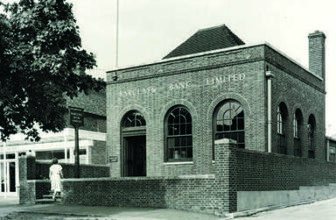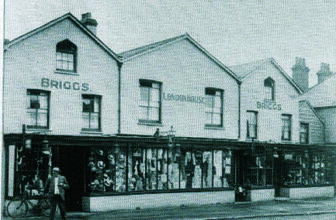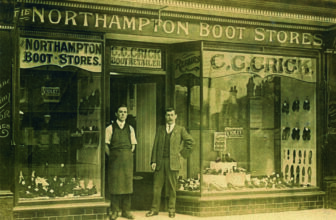
Cobbler’s hut under the tree, facing the Cricket Ground and a stone’s throw from the windmill, in 1908
Cranleigh’s beautiful common is surrounded by buildings of every century from the sixteenth to the twenty-first. Buildings from earlier centuries, being made of wood, have decayed and been replaced. This is the story of what is probably the smallest and the most recent building, but its history goes back at least 150 years.
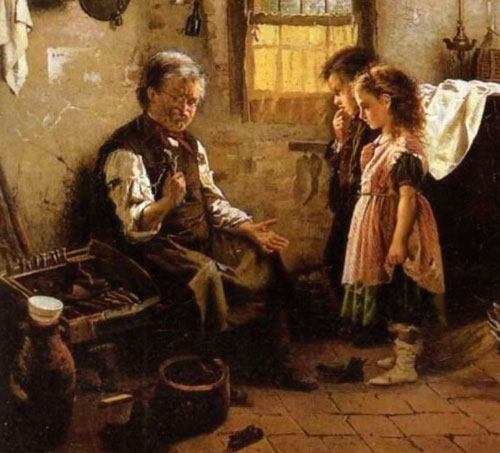
A cobbler sitting on his distinctive combined seat and tool box
Next to No. 1 Elm Tree Cottages was a cobbler’s hut. In the 1881 Census, Alfred Mitchell, 46, an unmarried bootmaker, was living and working here. Ten years later, in the 1891 Census, Joseph Mitchell, 57, master shoe maker, was recorded at this address, probably a relative (or even the same man). He was still here in 1901. Ten years later, Hedley Jeffries Reynolds, 31, from Cheshunt, Herts, boot repairer, with his wife Alice and 4-year-old daughter Hilda, lived in No. 1 Elm Tree Cottages, and Charles Evans, a pensioner of 83, lived in the 2-roomed hut next door. In August 1912, a national land tax assessment reported that H.J. Reynolds was occupying one of a block of four cottages on the Common, ‘but has a shop (formerly a small bungalow) at the side’.
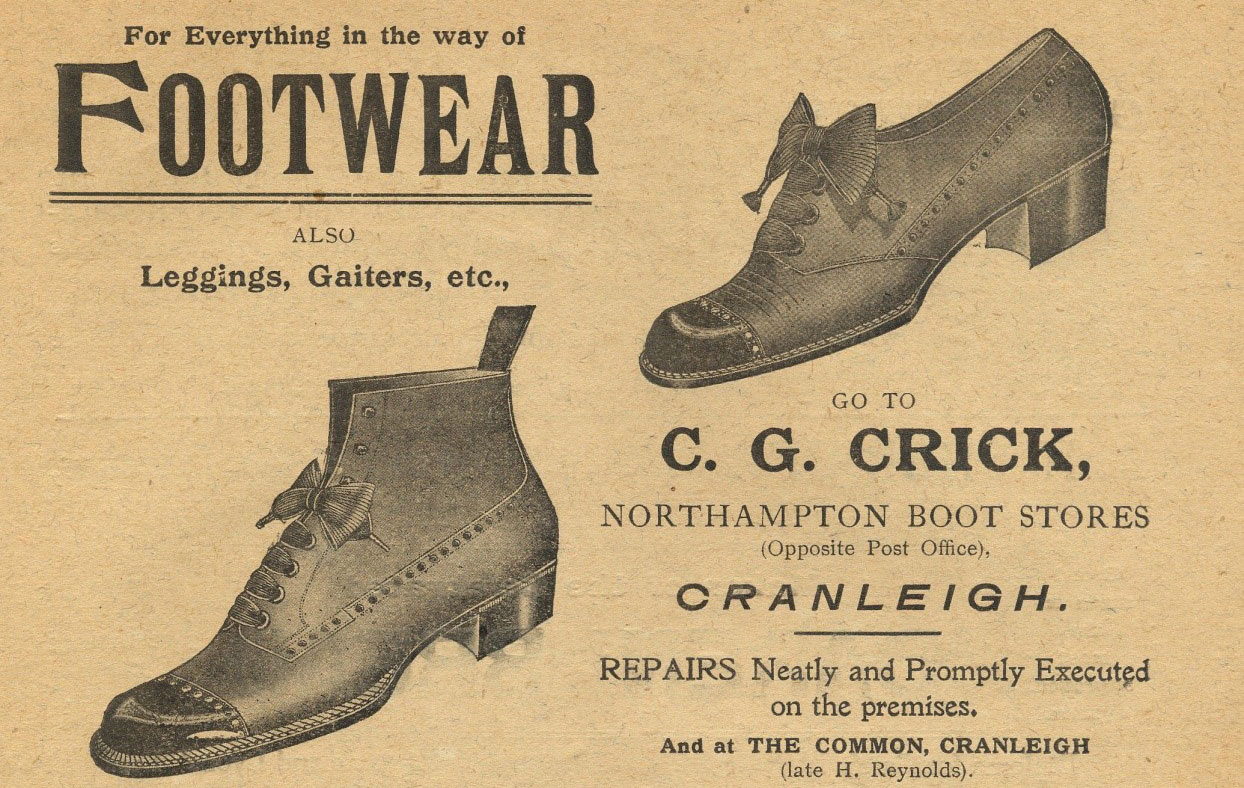
An advert in the Parish Magazine of 1918 shows that Charles Crick later took the hut over from Hedley Reynolds. Crick, a skilled shoemaker, but also a go-ahead retailer of boots and shoes, had come to Cranleigh in 1910 from Rushden, Northants, which was the centre of the shoemaking industry in England. (Football enthusiasts will know that the Northampton Town Football Club has the nickname ‘The Cobblers’.) He opened the Northampton Boot Stores, where the Oxfam shop now is. From 1917 he rented the hut on the Common also, and for a time his brother-in-law (another shoemaker) worked here. While the latest in shoes were sold in the Village, repairs were done by an assistant or apprentice in the hut on the Common.
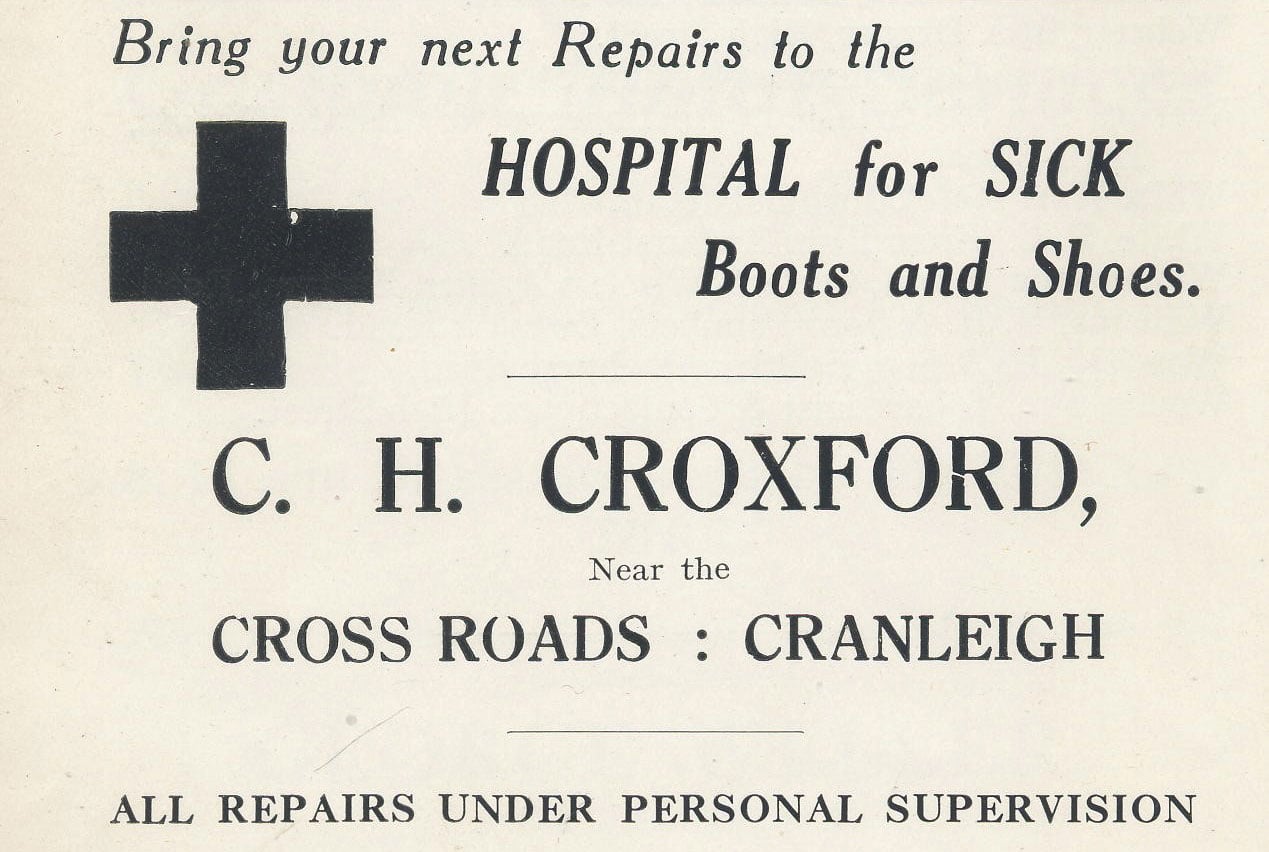
Advert in Cranleigh Guide of the early 1930s
By about 1928 Crick’s former apprentice, Charles Croxford, had set up independently in the cobbler’s hut. He advertised in the Parish Magazine in 1931, as follows: ‘Your friends bring their repairs to THE POPULAR Boot and Shoe Repairer, C.H. Croxford, near the Cross Roads, Cranleigh.’ Another advert called his business ‘the Hospital for Sick Boots and Shoes’. This was scarcely an exaggeration. A cobbler has to diagnose the shoe’s problem and find a remedy for it. This may involve sewing, cutting, stitching, patching, sanding, polishing, sealing or shining. Cobblers – and today’s shoe-repairers – have a wide range of skills.
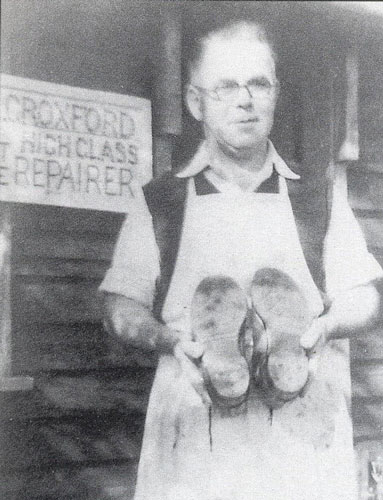
Charles H. Croxford (1896-1977) outside his shop
‘Cobbler, cobbler, mend my shoe,
Get it done by half-past two.
Half-past two is much too late –
Get it done by half-past eight.’

The cobbler’s hut, next to No. 1 Elm Tree Cottages, 2016
This rhyme has been chanted by children since the early 1800s. Cobblers started work early in those days. And maybe the owner possessed only the one pair of shoes. In days when people could not afford to go and buy a new pair when their shoes wore through, cobblers provided a vital service, and there were four or five in Cranleigh. There would be a regular flow of customers bringing their boots and shoes to be repaired, and to enjoy a chat with the shoe-repairer as he worked.

Similar to the one on Cranleigh Common
In the late 20th century, Betty Seymour, author of books on old Cranleigh, ran a second-hand bookshop in the cobbler’s hut.
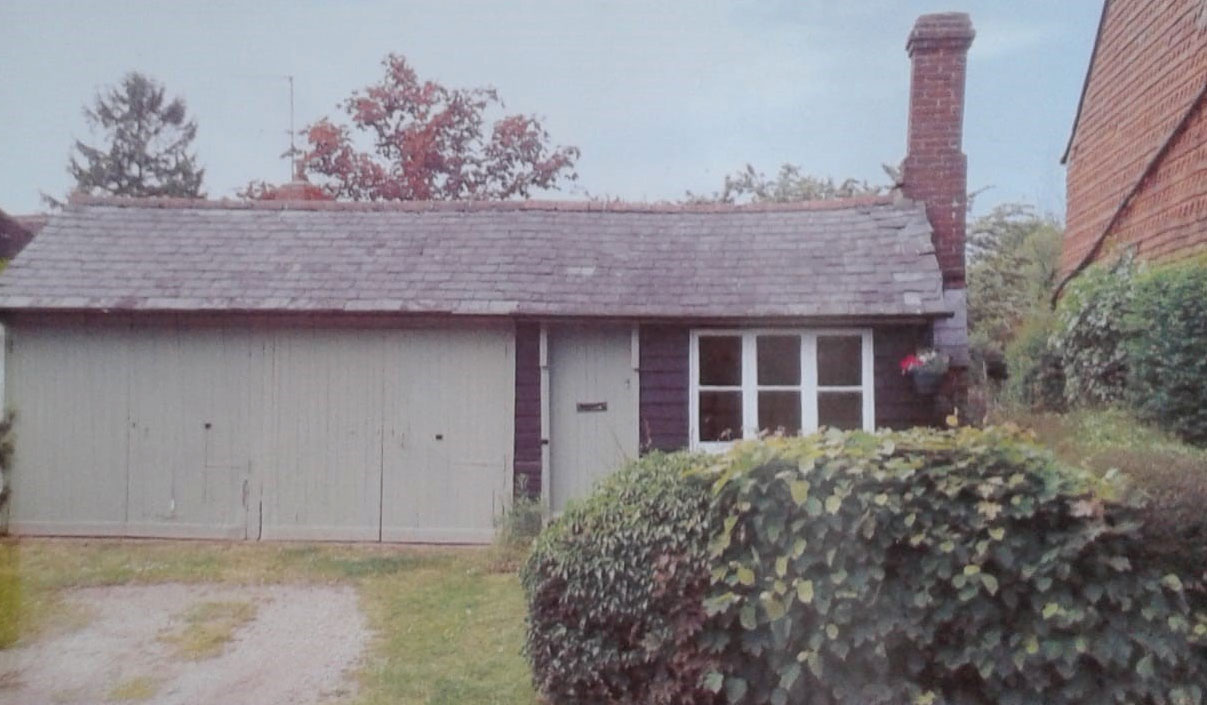
The boot repairer’s hut, about 2000, when it was a second-hand book shop (courtesy of Trish Sunnucks)
The Cranleigh History Society will resume its monthly meetings as soon the current restrictions are lifted.



